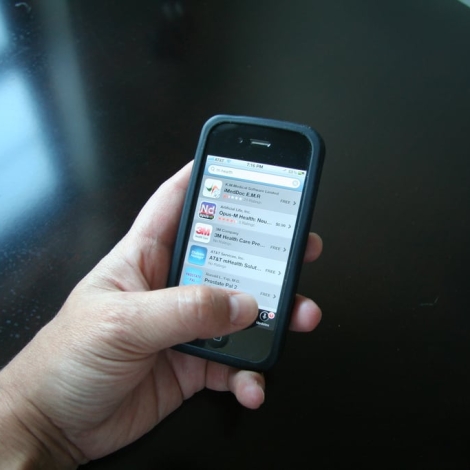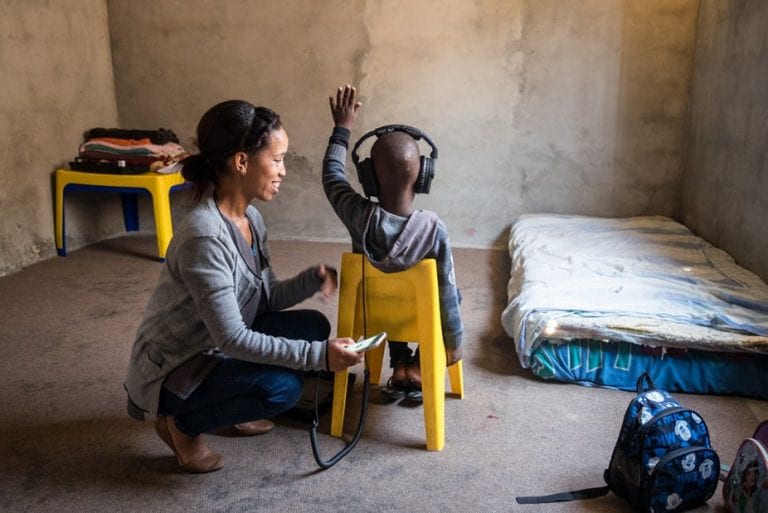Sure, the smartphone is rapidly changing health care in the developed world. We can do so much from the palm of our hands, including look up a medical condition, find treatment options, schedule a visit to the doctor and even pay for that visit. But phones are still a long way from instigating meaningful health care improvements in developing countries, in spite of what mobile’s cheerleaders are saying.
So, more than 80 percent of the population in Africa has access to a mobile phone. Afrobarometer’s survey of 51,000 people in 34 countries found that 72 percent own their own phones and 84 percent use mobile phones at least monthly.
I heard that figure, 80 percent, quoted frequently last year when I attended the World Economic Forum Meeting of the New Champions in Dalian, China. I also heard comments like, “Smartphones with imaging applications are going to revolutionize remote diagnosis in rural villages.” And, “We can just use apps to send personalized reminders to improve treatment compliance since this is such a big issue among the poor.”
But here’s the disconnect: the idea that the phone is all that is necessary to revolutionize healthcare for the hundreds of millions of people living on less than $4 a day is incomplete. The truth is in the details, which can only be understood by looking more closely at the people who actually use the phones.
Here are some important reality checks:
- Mobile phone penetration may be high in the developing world, but most of those phones are “feature phones” that do not run sophisticated operating systems like iOS or Android. In India, for example, only 8% of all phones are “smart.”
- People cycle phone numbers several times a year on pre-paid SIM cards. When a SIM dies because a user lets the minutes run out, it may be months before they save enough money to get a new SIM. This makes it very difficult to “keep in touch.” We see this problem in many of the prosthetics clinics we visit – it is hard to find patients to do follow-up care because their phone numbers have changed.
- Texts or Blackberry BBMs are the main mode of communication, since they are cheaper than talk minutes.
- Email and web access require a data plan, which is prohibitively expensive for most low income users
- Charging the phone is a constant income and time drain since most people do not have access to reliable electricity at home.
I am not an expert in mobile phone use in the developing world. I read articles, and make observations from field work in prosthetics clinics and hospitals in the developing world. However, my limited exposure is enough to know that the gap between wealthy citizens’ views of the smartphone revolution and what is actually possible today in the developing world is pretty large.
Circumstances will certainly change in the future, but how long will that take? What about the people who need better health care right now?
Rather than a top-down approach that often starts with a technology (smartphones) looking for a problem to solve (diagnosing diseases), my colleagues at D-Rev and I start with the problem statement from the user’s point of view. What is the user’s most important concern or highest priority? What tools are readily available to the user? Who is going to pay for the product or service? What other infrastructure (electricity, delivery methods, spare parts availability, etc.) would the solution require? These are simple questions that we can answer very quickly if we go talk to the people we’re trying to serve. This bottom-up, user-focused approach is what helps our products avoid the pitfalls that come with looking at the problem from the wrong perspective.
This piece was adapted, with permission, from the article “Smartphones may save the world, but not right now.”


Hello Randy. I read your ARTICLE carefully and did find you questions very interesting. several answers came to my mind, thinking about who could be interested in developing smart phone’s app’s to improve health services for the vulnerable POPULATIONS. i live in colombia and thought it could be a great social entrepreneurship for a cell phone company, for a omg, or simply for the colombian government, if they really wanted to extend health services for vulnerable groups or for a town difficult to travel from, to big cities. it would be even cheaper than having them to go to the closest hospital (no so close in most cases), when their health problem is too serious and the costs of treatment is to high or people even die. just some thoughts… somebody should care!!!!